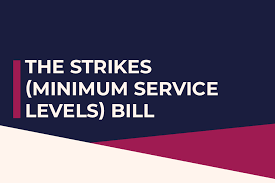Concerted Activities Under Labor Law under Employment Law
Concerted Activities Under Labor Law
Detailed Explanation with Case Law
1. Introduction
Concerted activities refer to actions taken by employees collectively or jointly to improve their working conditions, wages, hours, or other employment terms. These activities are protected under labor law, particularly under the National Labor Relations Act (NLRA) in the U.S.
2. Legal Foundation
The NLRA, enacted in 1935, is the primary federal statute governing labor relations.
Section 7 of the NLRA explicitly protects employees’ rights to engage in concerted activities for mutual aid or protection.
These rights apply whether or not employees are unionized.
3. Definition of Concerted Activities
Concerted activities generally involve:
Two or more employees acting together to address workplace issues.
An individual employee acting on behalf of others.
Collective actions including strikes, petitions, discussions about wages/conditions, or other group efforts.
4. Examples of Concerted Activities
Union organizing and collective bargaining.
Employee complaints or grievances raised jointly.
Strikes or picketing.
Work stoppages or slowdowns.
Public protests or demonstrations related to workplace issues.
Online discussions among employees about working conditions.
5. Scope of Protection
Concerted activities are protected even if the grievance or concern is not legally valid, as long as the activity is in good faith.
Protection applies to non-unionized employees as well.
Protection covers activities done on behalf of employees or others (e.g., speaking out for co-workers).
6. Limitations and Exceptions
Protection does not extend to actions that are illegal, violent, or involve serious misconduct.
Disruptions that threaten business operations in unlawful ways may lose protection.
Employer discipline is permissible if the activity loses its concerted nature or violates other laws.
7. Key Case Law
a. NLRB v. Washington Aluminum Co., 370 U.S. 9 (1962)
Facts: Employees walked off work to protest unsafe conditions without union involvement.
Held: The Supreme Court held that this walkout was protected concerted activity under Section 7 of the NLRA.
Significance: Established that even informal group protest over workplace conditions is protected, even without union authorization.
b. NLRB v. City Disposal Systems, Inc., 465 U.S. 822 (1984)
Facts: An employee alone initiated a complaint and another employee joined.
Held: The Court ruled that concerted activity includes action by a single employee on behalf of others.
Significance: Defined concerted activity to include individual employees acting to enforce group rights.
c. Epic Systems Corp. v. Lewis, 138 S. Ct. 1612 (2018)
Facts: Employers used arbitration agreements waiving collective or class actions.
Held: Supreme Court upheld arbitration agreements but recognized the NLRA’s protection of concerted activities outside arbitration.
Significance: Showed the tension between concerted activity rights and arbitration agreements.
d. Pier Sixty, LLC, 365 NLRB No. 161 (2017)
Facts: Employees posting complaints about management on social media.
Held: The NLRB ruled such social media posts about working conditions are protected concerted activity.
Significance: Extended protection to modern forms of concerted expression.
8. Practical Applications
Employers must be careful not to unlawfully discipline employees engaging in protected concerted activities.
Employees have the right to discuss wages, working conditions, and other employment terms collectively.
Social media posts and electronic communications may be protected if they concern work conditions.
Not all group activities are protected; the nature and context matter.
9. Summary
| Aspect | Description |
|---|---|
| Legal Basis | Section 7 of the NLRA |
| What is Protected? | Collective employee actions to improve working conditions |
| Who is Covered? | Unionized and non-unionized employees |
| Examples | Strikes, walkouts, complaints, online discussions |
| Limitations | Not protected if illegal, violent, or seriously disruptive |
| Key Cases | Washington Aluminum, City Disposal, Epic Systems, Pier Sixty |
10. Conclusion
Concerted activities are a cornerstone of employee rights under U.S. labor law, enabling workers to act collectively or individually on behalf of their peers to seek better workplace conditions. Courts and the NLRB provide broad protections, but these rights are balanced against employer interests and legal boundaries.









0 comments